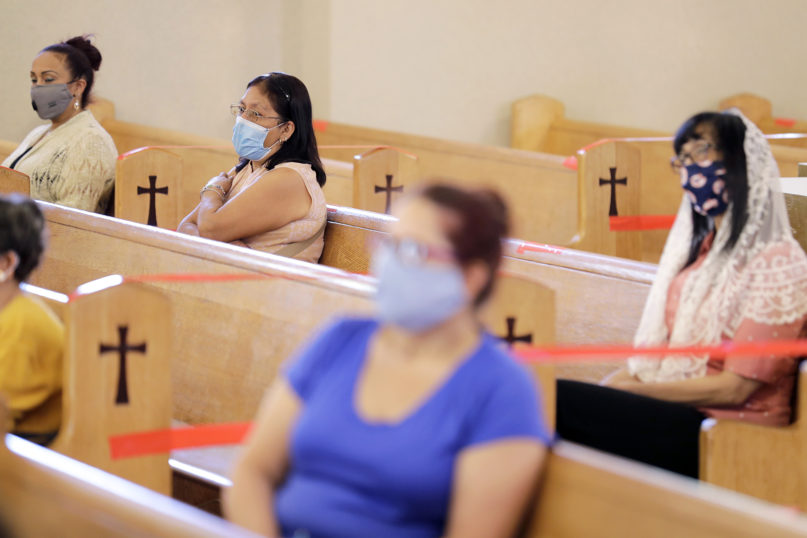 |
| AP Photo/Seth Wenig |
Is epidemic disease a spur to religious practice? Not, it seems, in the United States.
The great influenza pandemic, which carried off an estimated 675,000 Americans after World War I, did nothing to reverse the secularization of American culture that had been underway since the late 19th century. Indeed, the 1920s and 1930s were a period of religious depression in the U.S.
A century later, the COVID-19 pandemic swept over America amid a decades-long religious decline as the percentage of adults who claim no religious identity — the nones — rose from the single digits in the 1980s to a quarter of the population.
In a just-released survey, Public Religion Research Institute reports that between 2020 and 2022 the proportion of nones jumped 15%, from 23.3% to 26.8%. That’s the largest two-year increase registered by PRRI since it began measuring in 2006.
Correlation is not causality, of course, but when it comes to the gold standard of religious commitment — in-person worship attendance — COVID-19 was most definitely the causal factor. Whether voluntarily or under orders from their governments or simply because their churches had closed, a large number of Americans stopped attending after the pandemic hit — and many have not returned.
According to Pew, in July 2020 just 13% of American adults said that they had attended religious services in person or both in person and virtually (online or on TV) within the past month. Twenty-seven percent said they only attended virtually. That contrasted with self-reported pre-pandemic weekly in-person attendance in the high-30% range.
By last November, in-person and hybrid worshippers had grown to 28%, while the exclusively virtual attendees shrunk to 12%. By Pew’s count, the retreat of COVID-19 as a major societal concern thus left in-person worship attendance well short of pre-pandemic levels. --->READ MORE HERE
 |
| Gabriella Bass |
Nearly 56% of New York City 12th-graders missed at least 18 days of school last year, an alarming new post-pandemic study has found.
And despite the full opening of city schools after the COVID-19 crisis, nearly 50% of black and Hispanic students were chronically absent.
By borough, Bronx kids missed the most classes, 48%, data show.
“Student absenteeism has become significantly worse in the wake of the COVID-19 pandemic,” says the study issued Friday by the government watchdog Empire Center for Public Policy. “Students simply aren’t coming to school with the same regularity as they did before the pandemic.”
Kids fail to show for various reasons — including jobs, caring for younger siblings or feeling disengaged from school. In some ways, COVID lockdowns and remote classes “normalized the idea of not attending,” the report says.
The citywide rate of chronic absenteeism — when students miss 10% or more of the academic year, or at least 18 days — hit 40% in 2021-22, as first reported by The Post, up from 27% pre-pandemic.
The new report — titled “School’s Out Forever,” after the Alice Cooper song — gives a demographic breakdown showing the problem is especially severe among kids of color and students with special needs, as well as high-school seniors.
Using city Department of Education data, researcher Ian Kingsbury compared absenteeism in 2018-19, before the COVID crisis, to 2021-22, after DOE schools fully reopened. Among his findings: --->READ MORE HEREFollow links below to relevant/related stories and resources:
The COVID-19 pandemic cost the U.S. economy $14 trillion, new research finds
Using COVID-19 positive donor hearts may impact post-transplant survival
USA TODAY: Coronavirus Updates
WSJ: Coronavirus Live Updates
YAHOO NEWS: Coronavirus Live Updates
NEW YORK POST: Coronavirus The Latest
If you like what you see, please "Like" and/or Follow us on FACEBOOK here, GETTR here, and TWITTER here.

No comments:
Post a Comment